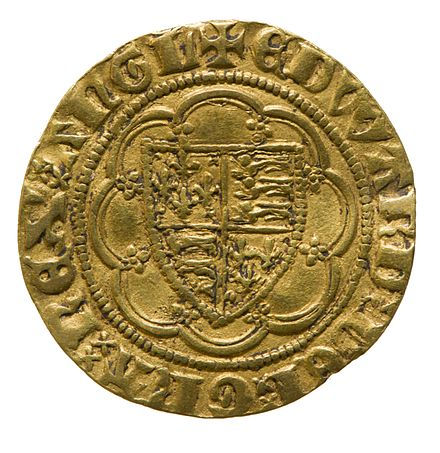1898: Most remarkable coin find
- andyrevell

- Nov 10, 2023
- 2 min read
Updated: Dec 9, 2023
Sussex Agricultural Express - Friday 25 March 1898
The treasure trove at Balcombe.
The Reverend Cannon Cooper then read an interesting paper on the recent discovery of a treasure trove at Balcombe. He said that one of the most remarkable finds of coins of Edward III in any county occurred at Balcombe on May the 23rd last. A man in the employ of Mr F. Pierce was levelling a field opposite to the Rectory gate called Stockcroft, on which a house was being built for Dr Newton, when his grafter struck up caught buried some 8 inches below the surface.

The vessel, of which, thanks to the kindness of Mr Pierce and the skill of Mr Herrington, they were able to give an engraving, was an ordinary household water jug of the end of the 14th century, resembling an modern coffee pot, with a handle and long spout, and standing on three legs. It was a brass, and stood 8 inches high. One of the legs had been broken off. In it were found 12 nobles and 730 silver coins of Edward III, and the groats and half groats were for the most part in good preservation, but the pennies were unfortunately much rubbed, the older ones, those of Edward the 1st and 2nd having seen most service.
Having narrated the proceedings before the coroner and the finding of the jury, the reverend gentleman said that the coins were handed over to the coroner for transmission to the treasury. Mr Pierce, owner of the field, was presented with the vessel, and each of the jury men with coin of the present reign, laughter. The treasury at once sent the coins to the British Museum, where they were most carefully examined by the assistant keeper of coins, and Mr L. E. A. Laurence, who had made the silver coinage of the three first Edwards his special study. It was in 1344 that Edward the third used the first regular gold coinage, but it was soon withdrawn, and instead of florins he coined nobles on which the king was depicted standing in a ship, perhaps commemorating a naval victory as that of Sluys over the French in 1340.

These coins were of very pure gold, and were the finest struck in all Europe. Having described a number of the coins, he said groats were first struck by Edward the first, but were not in general circulation till Edward the third. There were so many varieties hitherto unpublished, that out of the 206 of the first coinage, 1351 to 1360, the British Museum selected 120 all different in some more or less important detail. It might be calculated that 150 dyes were used to strike the groats in this horde during a period of nine years only, and this is only two minutes, London and York.
There was an interesting exhibition of the coins obtained by the society which, with other objects, were inspected with much pleasure.






Comments